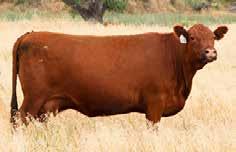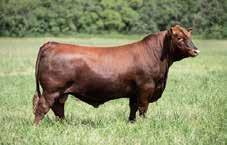Genetic Advancement Special Edition



March 8th, 2023 • 10 am • Throckmorton, TX
265 Bulls (Angus, Red Angus, SimAngus™)

100 “Hand-Picked” Commercial Bred Heifers
50 Registered Red Angus Females
CUSTOMER SERVICE • Intentional about adding value and promoting your calves
NO SHORTCUTS • Birth, growth, carcass, reproductive, docility and feet evaluation on everything
MAXIMUM RELIABILITY • All bulls DNA tested for utmost accuracy

BETTER BOTTOM LINES • Huge selection of elite $Profit bulls

NO CORN • Age Advantage bulls developed to stay in good condition while producing more calves
GAIN EFFICIENCY • Feed to Gain (F:G) Index on every animal
A few highlight females:
U2 Badge
Bieber Money Maker
Crump Innovation
8185
Laso American Dream
Catalog, sortable spreadsheets, videos, sale day streaming & bidding available online at:
Cattle designed to move the beef industry on the road to sustained profitability.



A few highlight bulls:
***including a rare opportunity to have the outstanding AI Sire, WEDEL RANCHMASTER 9052G, breeding cows naturally on your ranch. Selling the natural service rights and in-herd semen use.






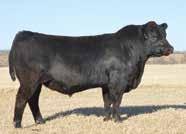
Mission Statement: We are continually striving to improve the sustainability and efficiency of converting God’s forage into safe, nutritious and great tasting beef to better feed His people.

Official Publication of the Red Angus Association of America

Special Edition Volume 1, Number 1
18335 E 103rd Avenue, Suite 202 Commerce City, CO 80022
(940) 387-3502 • Fax (888) 829-6069 RedAngus.org
Publisher/Advertising Director Tracey Koester (701) 391-5440 • tracey@redangus.org
Editor Brandi Buzzard Frobose (785) 448-0239 • brandi@redangus.org
Affiliated with National Cattlemen’s Beef Association Beef Improvement Federation U.S. Beef Breed’s Council National Pedigreed Livestock Council




GENERAL INFORMATION
Published 10 times annually by the Red Angus Association of America at the national headquarters (18335 E. 103rd Ave., Suite 202, Commerce City, CO 80022). A non-political magazine dedicated to the promotion and improvement of breeding, feeding and marketing Red Angus cattle. Subscription rate: U.S., 1 year - $30.00; 2 years - $55.00. Canada and Mexico, 1 year - $44.00, 2 years - $82.00 (Payable in U.S. Funds Only). International Air Mail, 1 year - $55.00; 2 years - $100.00 (Payable in U.S. Funds Only). These rates are based on Third Class Bulk mailed from Jefferson City, Missouri. Add $20.00 per year for First Class.
Advertising and editorial content are not limited to any particular class of product or subject matter. However, we reserve the right to refuse publication of any material not within the bounds of high agricultural ethics. While we devote the utmost care to the preparation of each advertisement, we cannot be held responsible for ads received after the ad deadline. Furthermore, the accuracy and content of copy received over the telephone is entirely the responsibility of the advertiser. No adjustment for incorrect ad copy will be considered for ads that are received after the ad deadline or that are placed over the telephone.
All unused reserved advertising space that is not canceled by the advertising deadline will be billed to the advertiser.
ADVERTISING
Was quite a specimen, with a style all his own. He moved out flawlessly, covering each step with his head held high. No regrets had a long level hip, pronounced stifle, sound structure and hoof, with true herd bull charisma. ‘2080’ was loaded with muscle bulging from his top-line and is two axe handles wide when you study him from behind, along with a massive amount of rib shape and volume. The combination of the beautiful designed proven Red Stewart Lady 2X, PZC TMAS Firestorm1880, and Duff Honcho 426 brings elite status out cross genetics.




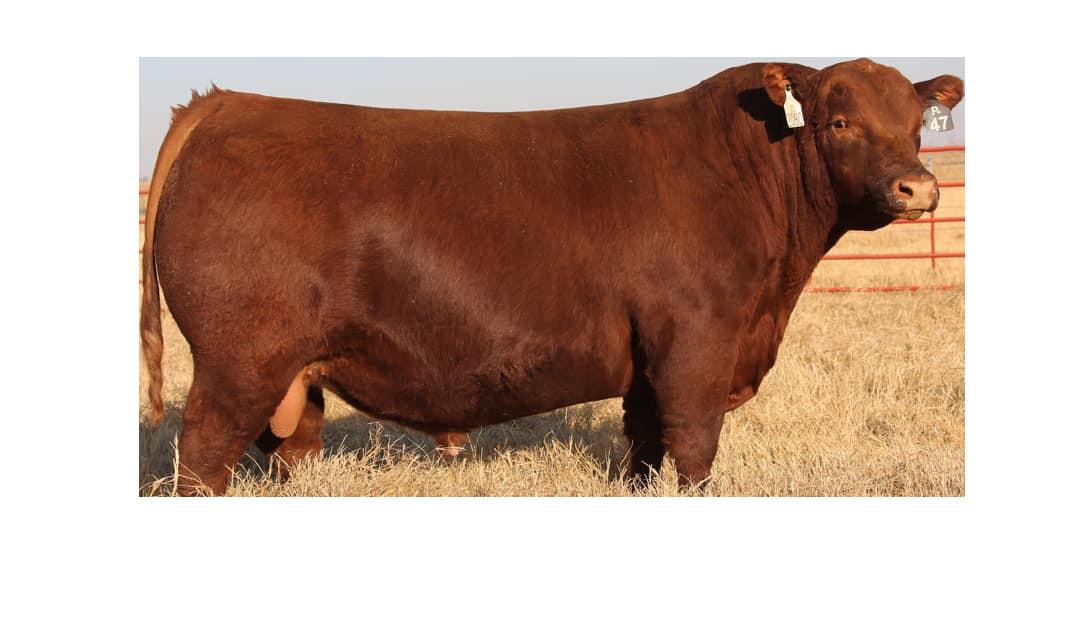
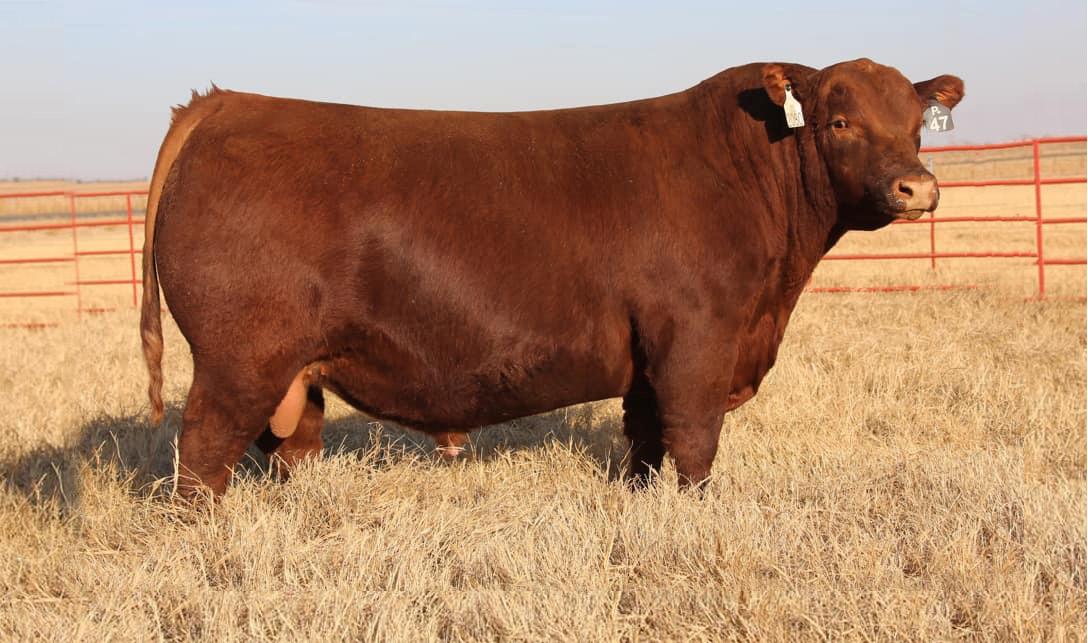
PRESIDENT
Steve Koester | Steele, North Dakota koesterredangus@gmail.com
FIRST VICE PRESIDENT
AREA 4 DIRECTOR - SOUTHWEST
Tony Ballinger | Morgan Mills, Texas anthony.ballinger@adm.com
SECOND VICE PRESIDENT
REGION C DIRECTOR
Jeff Pettit | Sebree, Kentucky jeff@diamondpcattle.com
AREA 2 DIRECTOR - MONTANA
BOARD SECRETARY
Kay Klompien | Manhattan, Montana klmpnra@gmail.com
REGION A DIRECTOR
Chuck Feddes | Manhattan, Montana feddesredangus@gmail.com
REGION B DIRECTOR
Craig Bieber | Leola, South Dakota craig@bieberredangus.com
AREA 1 DIRECTOR - WEST
George Murdock | Pendleton, Oregon murdockcattle@gmail.com
AREA 3 DIRECTOR - ROCKY MOUNTAIN
Aaron Kravig | Karval, Colorado akravig@kravigredangus.com
AREA 5 DIRECTOR - NORTHERN PLAINS
Stephanie Jung | Mina, South Dakota lazyjbarranch@yahoo.com
AREA 6 DIRECTOR - GREAT PLAINS

Jason Anderson | Oberlin, Kansas jasonea9@hotmail.com
AREA 7 DIRECTOR - NORTHEAST
Rob Hess | Hershey, Pennsylvania hessfarm@verizon.net
AREA 8 DIRECTOR - SOUTHEAST
Jim Yance | Columbia, Alabama jim@jyjredangus.com
AREA 9 DIRECTOR - MIDWEST
Stuart Gilbert | Stockport, Iowa redcowrelocators@gmail.com
Whether it’s a cow-calf producer sending a group of commercial steers to the feedlot or a seedstock supplier’s set of sale bulls, I love hearing them say, “This is the best calf crop we’ve ever raised!”
As it should be by using the freshest genetics in our breed.
Every year we hope to improve the cattle we raise through quality, efficiency and performance. But it’s not an easy – or fast – process.
From the time we procure or AI to a new sire, anticipate his calves’ birth and watch them grow, wean and develop, it is a multi-year process. If you retain daughers as replacements, that genetic-testing process is even longer as you wait to see how they develop into the industry’s most-favored female.

The good news is that we can take out some of the guesswork through DNA testing, techology and marketing programs. While producers still need to remain diligent in genetic selection, nutrition requirements and management practices, we have experts to help us grow year over year.
I hope the pages of this new Red Angus Genetic Advancement Special Edition provide knowledge and ideas to help you continue advancing your herd and goals toward higher quality and increased profitability.
Keep in mind, there’s no growth in your comfort zone and no comfort in your growth zone.
I challenge you to continue growing and striving to reach your genetic and production goals, and that in return, the market rewards your hard work and dedication to advancing the industry’s genetics. //

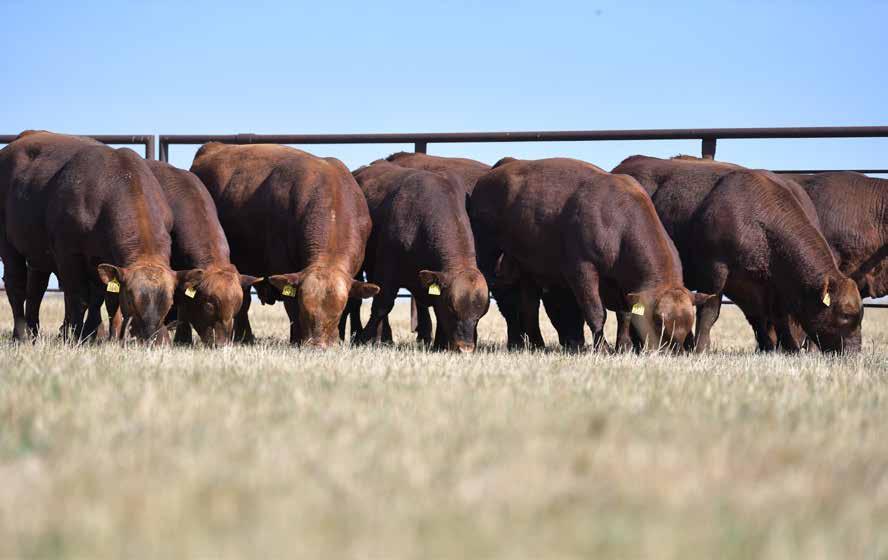


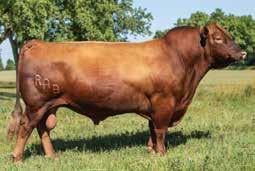

Wedel Prime-Time 0007
$24,339 $Profit (4/10 of 1%) $85 $Ranch (9%)
$230 $Feeder (1/10 of 1%) 90 MARB (2%),
21 CED to 128 YW Spread, .36 ADG (3%)
Nextpectation x Merlin x Prospect
Good Footed, Tight Sheathed, Moves Like a Cat.






CHIEF EXECUTIVE OFFICER
Tom Brink
Ext. 4 | tombrink@redangus.org
DIRECTOR OF BREED IMPROVEMENT
Ryan Boldt
Ext. 12 | ryan@redangus.org
BEEF CATTLE GENETICIST
Dr. Lindsay Upperman Ext. 29 | lindsay@redangus.org
EXECUTIVE ASSISTANT
Halla Pfeiff
Ext. 10 | halla@redangus.org
REDSPRO & REGISTRY SPECIALIST
Kaitlyn Fulmer
Ext. 6 | kaitlyn@redangus.org
REDSPRO & REGISTRY SPECIALIST
Stephanie Johnson Ext. 26 | stephanie@redangus.org
MEMBER SERVICES & DNA SPECIALIST

Ryan Starkey
Ext. 5 | ryanstarkey@redangus.org
DNA DATA PROGRAMS COORDINATOR
Alana Skelton
Ext. 14 | alana@redangus.org
DNA CUSTOMER SERVICE SPECIALIST
Kai Miranda Ext. 24 | kai@redangus.org
DATABASE AND REGISTRATION CONSULTANT

Kenda Ponder Ext. 15 | kenda@redangus.org
DIRECTOR OF EDUCATION & JUNIOR PROGRAMS
Dr. Kim Heller (515) 851-2019 | juniors@redangus.org
PUBLISHER & ADVERTISING DIRECTOR
Tracey Koester
(701) 391-5440 | tracey@redangus.org
EDITOR & DIRECTOR OF COMMUNICATIONS
Brandi Buzzard Frobose (785) 448-0239 | brandi@redangus.org
COMMUNICATIONS SPECIALIST
Lisa Bryant (405) 766-8942 | lisa@redangus.org
SHOW SPECIALIST
Erin Dorsey (970) 396-5420 | erin@redangus.org
ACCOUNTING DIRECTOR
Janet Russell Ext. 11 | janet@redangus.org
DIRECTOR OF COMMERCIAL MARKETING
Harold Bertz
(816) 661-2289 | harold@redangus.org
ASSISTANT DIRECTOR OF FIELD SERVICES
Katie Martin Ext. 16 | katieochsner@redangus.org
COMMERCIAL MARKETING SPECIALIST
Nolan Woodruff (805) 861-0996 | nolan@redangus.org
COMMERCIAL MARKETING SPECIALIST
Rachael Oliver
(406) 480-1569 | rachael@redangus.org
ASSISTANT DIRECTOR OF VALUE-ADDED PROGRAMS
Chessie Mitchell Ext. 20 | chessie@redangus.org
VALUE-ADDED PROGRAMS SPECIALIST
Jeananne Drouhard Ext. 18 | jeananne@redangus.org
The Red Angus show list informs feedyard managers, order buyers and other interested parties of Red Angus-influenced cattle. Producers can market feeder or finished cattle through this free service when selling through a sale barn, video auction or private treaty. The weekly show list is emailed to potential buyers through the Red Angus FeederFax email service. To upload information about cattle or to view cattle available, visit RedAngus.org/showlist.
To receive the weekly FeederFax marketing service that will highlight that week’s show list, please email tags@redangus.org.
LONG-TERM VISION: Dominate the beef industry with Red Angus genetics.
MISSION: Our mission is to provide our members and their customers with innovative programs and services, to continue advancing the quality, reliability and value of Red Angus and Red Angus-influenced seedstock used in the commercial beef industry.
Commitment, Innovation, Integrity, Relationship Driven
BIEBER CL ENERGIZE F121
RAAA 3958815
BIEBER CL ATOMIC C218 x BIEBER HARD DRIVE Y120
“We’ve tried other programs in the past, but when you find what works you stick to it. With AI, I basically bred out all the difficulties. I wanted uniformity, but I’ve improved udder quality and structure in the herd. I also have a tighter calving season, and with AI to calving ease sires, I can calve without having to watch; and less labor is always great.”
ENERGIZE YOUR HERD
4 Go-To bull for dynamic phenotype, structure and EPD profile across the board
4 Blends the growth curve with added CE and exceptional carcass value
4 Loads of body and dimension, you really like how bold sprung and soft made he is, and you will love his feet and overall structure
4 The more progeny he produces, the more famous and sought after this bull gets…EXPECT SUPPLIES TO BE VERY LIMITED!

LSF SRR PRIME PLUS 0111H

RAAA 4275705
LSF SRR RANCHER 7190E x LSF TAKEOVER 9943W

4 Raising the quality bar with the highest Marbling animal in the Red Angus database

4 PRIME PLUS is such an outlier that he will move breed average into the top 1% of the breed for marbling in one generation
4 Displays the look and physique of a true beef bull - Big bodied, bold sprung, shows base width and abundant muscle expression
4 Ranks in the top 2% for both of the Leachman $Profit and $Ranch indexes, maker of awesome daughters and profitable feeder cattle
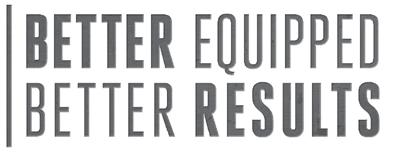

“AI gives us the total package. We can breed a heifer designed like we want with predictability. We used to use young sires, now we use proven sires because the reliability and consistency is something we can’t put a price on. (Those heifers) stay in the herd and don’t fall out. ”
Jerry Kuenning, Imperial, NE
ABS is the industry’s source for profit minded genetics. Backed by a data driven, comprehensive “Pasture to Plate” approach, over two decades of progeny feed intake data and our exclusive Sexcel sexed semen technology, ABS is better equipped to deliver results you can count on. To learn more about the ABS genetic service toolbox, contact your local ABS Representative or call 1.800.ABS.STUD.
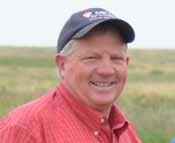 Mark Fulton, Fulton Ranch, SD
Mark Fulton, Fulton Ranch, SD
































We practice selection and culling for traits that support efficiency and longevity within our environmental constraints of the Badlands in North Dakota. Cattle that excel in this setting can flourish just about anywhere else!
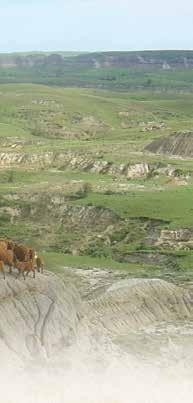


Annual Producti Sale

Buy with c fidence –
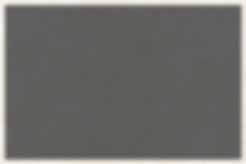




Our bulls are genomic tested, parent verified, carcass ultrasounded and fertility tested.
Tuesday, March 7 • The Feedlot
Prime Rib Supper • 6 p.m.
Selling:
50 Red Angus Yearling Bulls
60 Angus Yearling Bulls
Including a good selection of heifer-bull prospects.
Registered & Commercial Red Angus Heifers Available by Private Treaty





dedicati to producing quality p f mance ca le is a c tinuing c mitment to r cust s.









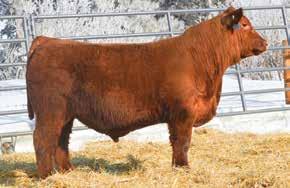





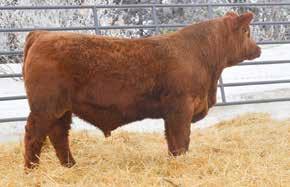






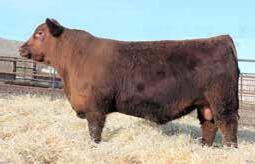







1. Purchase Top Dollar Angus-qualified bulls.
2. Raise Top Dollar Angus-qualified feeder calves.
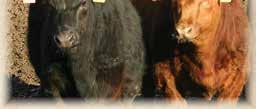

3. Pocket MORE per head!
THE RESULTS:
Better performance and a documented $84.26-per-head advantage as fed cattle! The PROOF is in your bank account.



Top Dollar Angus has the necessary resources to provide third-party genetic verification of high-quality Angus and Red Angus-influenced feeder calves and females. Combining genetic verification with our extensive network of seedstock partners and feedyards allows Top Dollar Angus to deliver the unique ability of marketing assistance to our customers and truly connect people to people and people to profit.
Read about satisfied steer-sellers. Click the QR code:









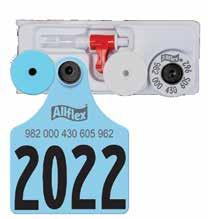


Eliminate the hassle of taking blood or hair samples. Allflex Tissue Sampling Units (TSUs) quickly capture clean, high-quality DNA. One squeeze and you're ready for genomics in breeding and marketing. Plus, matched sets of Allflex TSUs, EID tags and custom visual tags make it easier to link perf ormance data to genetics to market demand, authenticating your brand of cattle in the supply chain.
www.allflexusa.com
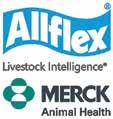



With a few quick keystrokes, Mahdi Saatchi, Ph.D., shapes the genetic future of a calf crop.



He pushes up the average weaning weight, and the blue target indicating ProS index in the next window drops from $122 to $113. He points to the graphs on the screen.
“When we see that, maybe we consider a different strategy.” The geneticist and RightMate technology developer re-keys a few data points. “Let’s try, instead of increasing weaning weight average, we set a minimum weaning weight; we focus on avoiding the low end and see what that does.”
The blue index target shifts again, recovering some losses. He clicks through the dropdown menu and selects for calving ease.
“You might ask it, reduce variation here; set minimum and maximum … and you see this shape start to change the distribution to get rid of too big and too small.”


Saatchi’s Top Genomics developed the RightMate technology as a precision enhancement to modern genetic evaluation tools.
“With this, based on the cows they have and the bulls they select, breeders can interactively see – they can visualize – and adjust their breeding objectives to maximize gain, protect diversity and achieve their objectives with much more precision,” Saatchi explained.
It’s somewhere in this process, while the breeder watches their potential calf crop graphically evolve as Saatchi pushes and prods at different traits, Allied Genetic Resources CEO Marty Ropp adds, that a breeder starts to shift their own thinking from, “’I’m a little bit uncertain of this technology,’ to, ‘This is the neatest thing I’ve ever seen.’”
The RightMate technology hinges on the identification and use of large effect genes to reduce genetic uncertainty in specific matings. Unlike single-mutation genes that wholly control traits like coat color, polledness and certain genetic defects, complex traits like growth rates, calving ease, carcass traits and maternal markers like stayability are polygenetic. This means multiple genes – sometimes numbering in the tens of thousands – influence those traits.

Still, even in complex, polygenic traits, there are often specific, large-impact genes that have an outsized effect on the
biological manifestation of the trait. Those are the genes the RightMate technology zeros in on to make precise genetic forecasts.
Ropp describes an experience nearly every skilled seedstock breeder has suffered at least once. They study the EPDs to find just the right sire. They know their cow herd well, and they can see how his traits could push the herd in a positive direction.
Many of the matings turn out as planned, but perhaps a handful fall out completely and result in unmarketable outliers. Worse yet, a donor cow mismatches genomically with a sire and an entire flush is wasted.
“On paper, it looked great,” Ropp said. “But what we couldn’t see were the potential problem combinations of large-effect genes that resulted in a wasted mating.”
Like matching homozygous polled to homozygous polled to ensure polled progeny, RightMate looks at dominance or weakness in the large-effect genes that carry an outsized impact on complex performance traits.
“The EPDs give an aggregate of all the genetic potential. That’s important,” Ropp said. “But RightMate goes deeper and predicts those large-effect gene combinations, avoiding the deleterious matches and maximizing the combinations that are as good as they can be.”
ease sire with length, bone and rib expression plus an attractive front end.
Out of the great Rebellas family that produced Major League, Grand Canyon, and LCB Hoss, he is surefire calving ease with huge growth and carcass.
Ringstead Kargo x 6 Mile Full Throttle. He's long-bodied, big-boned, bold-ribbed, deepsided and powerful!
Loaded with growth in a moderate BW package and top






Long and super smooth with outstanding ProS and HB.
New, exciting herd sire at Mid-Continent Farms, KS!
in his first two events of his career at Denver and Houston and has balanced
Proven heifer safe with great bone & look!
The exciting Wildcat Creek & Griswold calving ease herdsire!
The Power Eye x Mulberry son that makes your herd more valuable!
Awesome Doc Holiday son at TC Reds, McMurphy and Webers. Sired high sellers at Ladies in Red Sale!
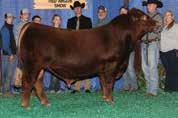


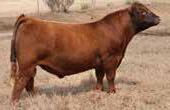



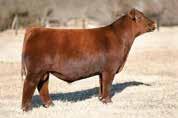
Exciting RED COCKBURN ASSASSIN son out of Damar Mimi working at Kennedy’s, OK!
A calving-ease stallion with phenotype!
Prolific in design, muscle pattern and overall presence; producer of elite show heifers.
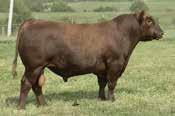

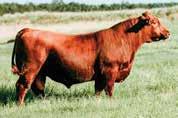




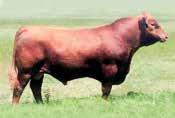



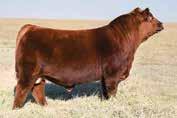





Back at Dr. Saatchi’s computer screen, he hit the “Print Matings” button to the left of the series of blue “Trait Management” bar graphs. As he added new targets or limited variability, the corresponding mating recommendations shifted and re-rank accordingly in the background.
He downloaded and opened the resulting Excel document. Each cow was now listed with her most advantageous matings, and the genetic projections of each mating. Some cows have three matches, others have eight, or 15 out of the possible 20 the breeder submitted. Each potential mating computes the statistical summary of the progeny’s genetic potential and ranks the matings based on the breeder’s objectives.
“This is artificial intelligent technology that helps us maximize all of the data together,” Saatchi said. “We cannot do this by hand.”
While the computer crunched the numbers, the process of using the RightMate technology still starts and ends with a human touch.
“If the technology has a limitation, it’s that it can’t set your breeding objectives for you,” Ropp said. “The breeder still has to make those decisions, set their goals and priorities, and weigh the options the computer gives him.”

Working across breeds and indexes, Saatchi said the technology is ideal for breeders who have or are planning to collect genomic information on their herd.
“Part of what we want to do is help squeeze more information out of the genomic investment a beef breeder has already made,” Saatchi said.


The customer submits a list of their cow registration numbers and a request to transfer genotype information. Some breed associations charge a genotype transfer fee; the Red Angus Association of America’s is $1 per animal.

The breeder can submit up to 20 bulls as potential mates, with registration numbers and a genotype transfer request. Each cow costs $25 to run through the system, with a cap at $5,000 per customer.
“When you use RightMate as a precision mating tool – in combination with EPDs and knowledge – you can measure the improvement.”

“You pick the bulls you like based on phenotype, EPDs and pedigree, and our tools match them in the best way to get the most advantageous matings based on your objectives,” Saatchi explained.
He started by removing the bulls that are not genomically suited to specific cow matings. Then, the remaining bulls were ranked based on potential for the outcomes the producer desires. The customer can get on a virtual call with Saatchi to see the graphical results in real-time.
“This is where they can see if they want to put more into their HerdBuilder index, or their GridMaster, ProS or more specific maternal traits. What does that look like? How does it affect other traits? We can sort cows to different objectives and customize those matings, too,” Saatchi said.
In 2019, when the first customers beta tested RightMate, they used the precision mating tool on 1,200 cows. The fourth calf crop will be born from those initial herds in spring 2023. In the seven years prior to using the RightMate technology (2013-2019 calf crops), the breeders added an average of +2.09 per year in their Simmental All-Purpose Index. With the three calf crops since making all breeding decisions with the RightMate matchings, they pushed that API forward an average of +3.60 each year.

Ropp said they do not have enough validation data on Red Angus herds to show specific ProS index improvements, but they will see a second calf crop from several Red Angus
herds this spring. In 2023, they expect more than 10,000 calves to be born from RightMate pairings.

“It is a quantum leap in traditional thinking to see the amount of genetic improvement and improvement in uniformity we can make at the same time,” Ropp said. “It’s one thing to improve an index by challenging the top two or three traits and forcing them up, but it’s another thing to make improvements for almost every single trait that goes into it, and that’s what we’re seeing here.”
While the heart of the tool helps breeders improve performance and uniformity, that can’t be done by sacrificing genetic diversity, Saatchi said.
“In the long term, genetic diversity is our bank for additional improvement,” Saatchi said, so he also sets customizable parameters to limit the percentage of a mating’s shared genome or inbreeding. “This allows us to make very targeted breeding objectives while protecting genetic diversity.”
In the mating report, Saatchi scrolled over two full screens of columns filled with projected progeny data.
“Some like to see all of the numbers; others just want to know, ‘Will this make more calves in the top percent of this or that?’” he explained. “But they all want to avoid any wasted mating. We want every calf to have the potential for success.”
That shows in the data on his screen, of course, but it’s most marked when the calves hit the ground and the tight bell curve that showed on the computer is now standing in the sorting pen to be pictured for a sale catalog.
“When you use RightMate as a precision mating tool – in combination with EPDs and knowledge on the ground –you can actually see the difference, and more importantly you can measure the improvement,” Ropp said. “It literally changes your expectation of what is possible.” //
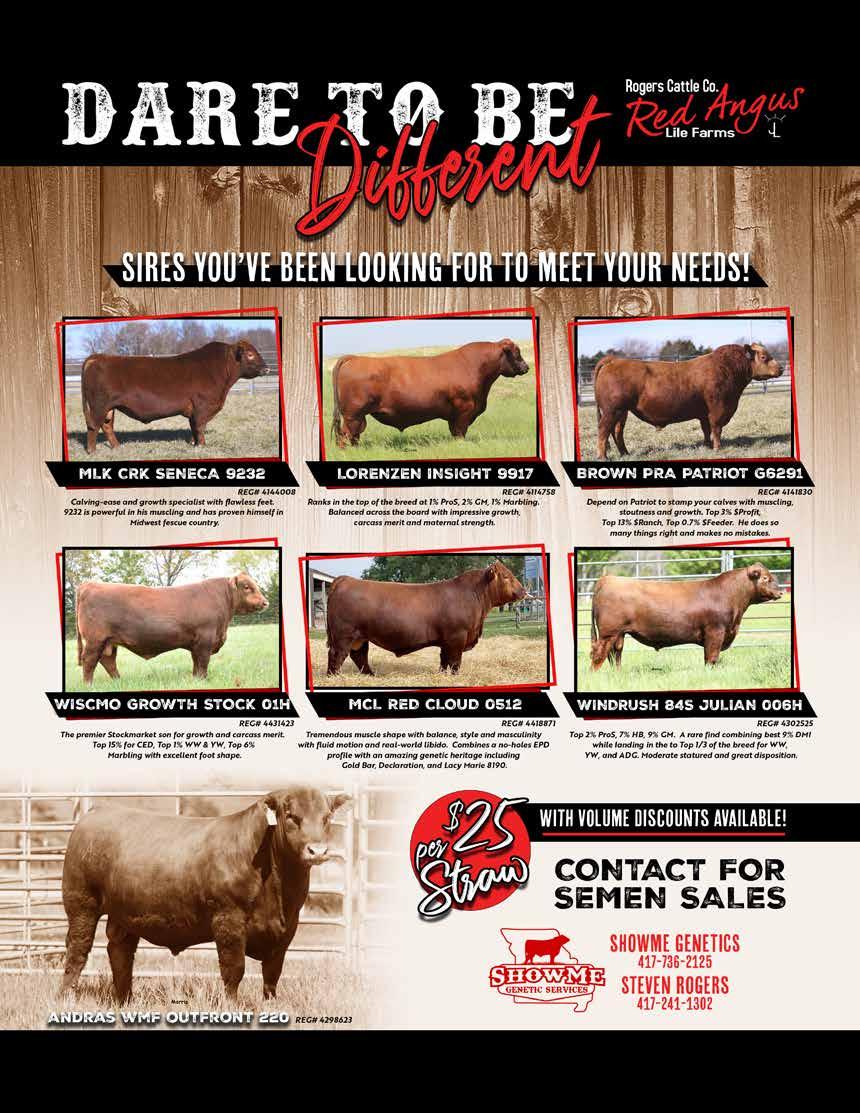
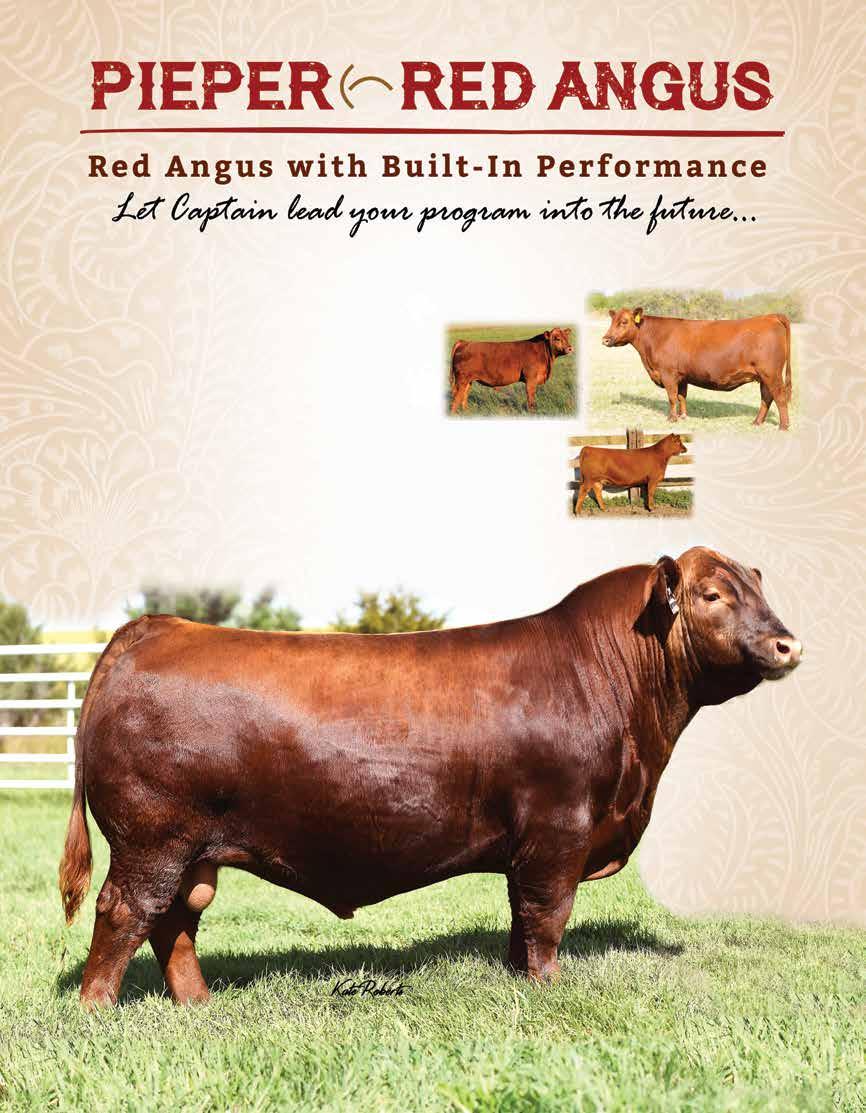

A cow’s prenatal nutrition influences everything from colostrum quality and milk yield to her calf’s immune system and her ability to breed back on time. Providing adequate nutrition is critically important during the third trimester and through the breeding season, and years of research shows negative energy balance (weight loss) prior to calving and during early lactation can result in reduced cow and calf performance.
This is perhaps most evident in spring-calving herds, where low-quality winter forage and tough weather conditions coincide with increasing nutritional demands – energy requirements increase by about 20% between the second and third trimester and then surge an additional 40% during the early stages of lactation.
Nutritional needs are further compounded when you factor in the current widespread drought conditions. Many cows grazed dehydrated summer forages that were likely in early dormancy and lacking in adequate vitamins and minerals. Furthermore, many winter diets this year include late-harvested hay, crop residue or failed crops. With little hay carryover from 2021 and drought conditions throughout much of 2022, producers had to be creative to find enough roughage to winter their cows.
David Lalman, Ph.D, Oklahoma State University extension beef cattle specialist, said current forage conditions across much of the country are concerning and require special attention to maintain spring cow condition through a demanding nutritional season.


Research shows mature cows calving in body condition score 5 or greater produce enough colostrum with adequate concentrations of immunoglobulins, which are important in creating a calf’s initial passive immunity. She should maintain that condition through early lactation to optimize her potential to breed back early.

“When cows calve in thin condition, postpartum interval (the time from calving to the first estrous cycle) is extended, and the further below BCS 5 those cows are at calving time, the longer the postpartum interval will be. The result is fewer cows cycling and breeding early when the bulls are turned out,” Lalman said. “Avoiding negative energy balance can be difficult and expensive in years like this with limited forage, especially in herds calving early. After calving, the goal should be to maintain cow body condition or to at least minimize her weight loss.”
Forage testing is fundamental to beef cattle nutrition and essential to best determine supplementation needs. Lalman said test fees typically range from $15 to $50, depending on the level of information desired. Test results can be combined with other pertinent information in a decision-making tool like OSU’s Cowculator to explore gaps or excesses in a nutritional plan and to evaluate various forage and supplement options.
Oklahoma State University’s David Lalman recommends using forage tests to identify supplementation needs, as a positive and consistent plane of nutrition is critical during a cow’s third trimester and through the breeding season.

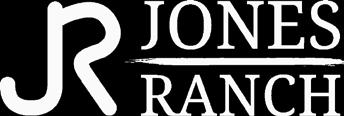

“With a forage test and a little time working with a ration evaluation program, you should be able to determine whether that forage is adequate for protein, energy and mineral,” he said. “In most cases, there will be deficiencies or excesses, and you can use the program to determine how well different supplement options fill those gaps left by the forage base and how much of the supplement you should feed.”
Taking the time to calculate available nutrients can also be financially beneficial. When you consider that nutrition expenses – pasture, purchased and harvested hay, and concentrate feeds – make up between 40% and 50% of the annual cost to maintain a cow, it is easy to see how efficient supplementation can affect your bottom line.


For example, with a hay test, some producers are going to discover their hay contains inadequate protein to maintain a cow during gestation – about 8% of diet dry matter. However, some will discover their hay contains 9% protein or more. In those cases, especially during gestation, supplementation may not be required. That could lead to savings as much as $1 per head, per day.
A free-choice mineral program is a relatively easy and inexpensive solution to supplement vitamin deficiencies.
“Minimizing the cost of production is the key to being profitable in a commercial cow-calf operation,” he said. “A 2021 Kansas State University study shows that differences in production costs account for about two-thirds of the difference between the most profitable and the least profitable cow-calf operations. In comparison, differences in revenue due to production (i.e. weaning weight and price) accounted for about one-third of the difference between the most and least profitable operations.
The OSU Cowculator is a Microsoft Excel spreadsheet designed to assist cattle producers in making informed decisions associated with beef cow nutrition. The user-friendly software program considers the type of animal, stage of production, breed, weight and forage test results and provides supplementation recommendations based on the body condition change or maintenance desired during the feeding period being evaluated.
For more information or to request access to the OSU Cowculator, visit extension.okstate.edu/programs/cowculator.html. //
“Minimizing the cost of production is the key to being profitable in a commercial cow-calf operation.”
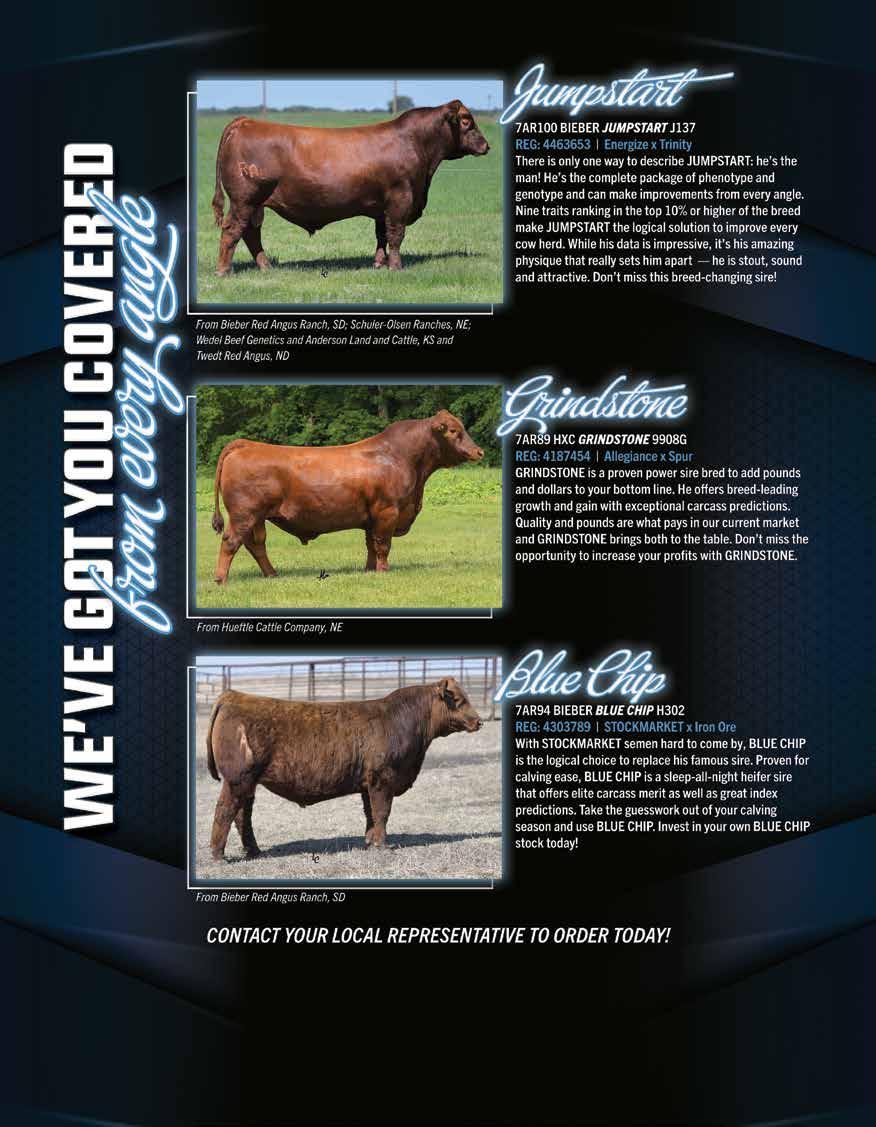

“Reconciling nutritional needs with a hay test and a ration evaluation program is the first step in evaluating opportunities to cut back on winter nutrition costs.”
In addition to reduced energy and protein levels in forages, drought years can also lead to vitamin A deficiencies, which can affect both cow and calf. Cattle have the ability to convert the carotene found in the green pigment of plants into the active form of vitamin A, and during a grazing season with average moisture levels, cows can usually consume enough vitamin A stores to last two to three months.
Unfortunately, Lalman said a lot of the forage grazed and harvested this past year had lost most of its green and subsequently, its carotene concentration.
“Regardless of the year, vitamin A generally declines rapidly in forage as it becomes more mature through the fall, and the carotene concentration of that forage drops down close to zero,” he explained. “As we saw this past year, that process can happen a lot earlier during a drought.”
While it is nearly impossible to see symptoms of vitamin A deficiencies in cows, Lalman said it can reduce a newborn calf’s ability to establish a strong immune system and cause late-term abortions, stillborn calves and retained placentas.
Fortunately, vitamin A supplementation is both relatively easy and inexpensive, and during the grazing season is typically achieved through a free-choice mineral program.
Lalman said a gestating cow requires about 30,000 international units of vitamin A per day, and that number increases to nearly 55,000 IU per day for a lactating cow.

Lalman said it is becoming apparent that radical changes in a cow’s diet or nutritional plane around the time of breeding can cause detrimental early embryonic loss, with some data indicating a 10% decline in timed AI conception rates.
“A common scenario might be to maintain cows in a drylot or sacrifice pasture where hay and supplement is fed, then once timed AI is completed or bulls are turned in, the cows are turned out on lush green pasture,” he said.
“That represents a sudden change in their diet and plane of nutrition, and Dr. George Perry’s work has shown that those radical changes can result in lower early breeding success.
“Instead, just prior to and during the breeding season, diet changes should be gradual if possible. This may require adjustments in the timing of breeding (calving season) as well as the nutritional program.” //

























By testing commercial females, cattlemen can make improved selection decisions, targeting performance and herd-quality goals.

Red Navigator DNA test provides:

• Parentage (if sire is DNA tested)
• Genetic assessment (percentile rank) for each RAAA trait
• Most accurate results on commercial females that are 75% or more Red Angus
Take
1. Contact RAAA to order test kits.
2. Collect samples: Blood or tissue samples required for testing.
3. Submit DNA samples and payment to RAAA.
4. Call the DNA department for your custom results timeline.
5. Receive personal consultation on the DNA results with a member of the RAAA staff member.









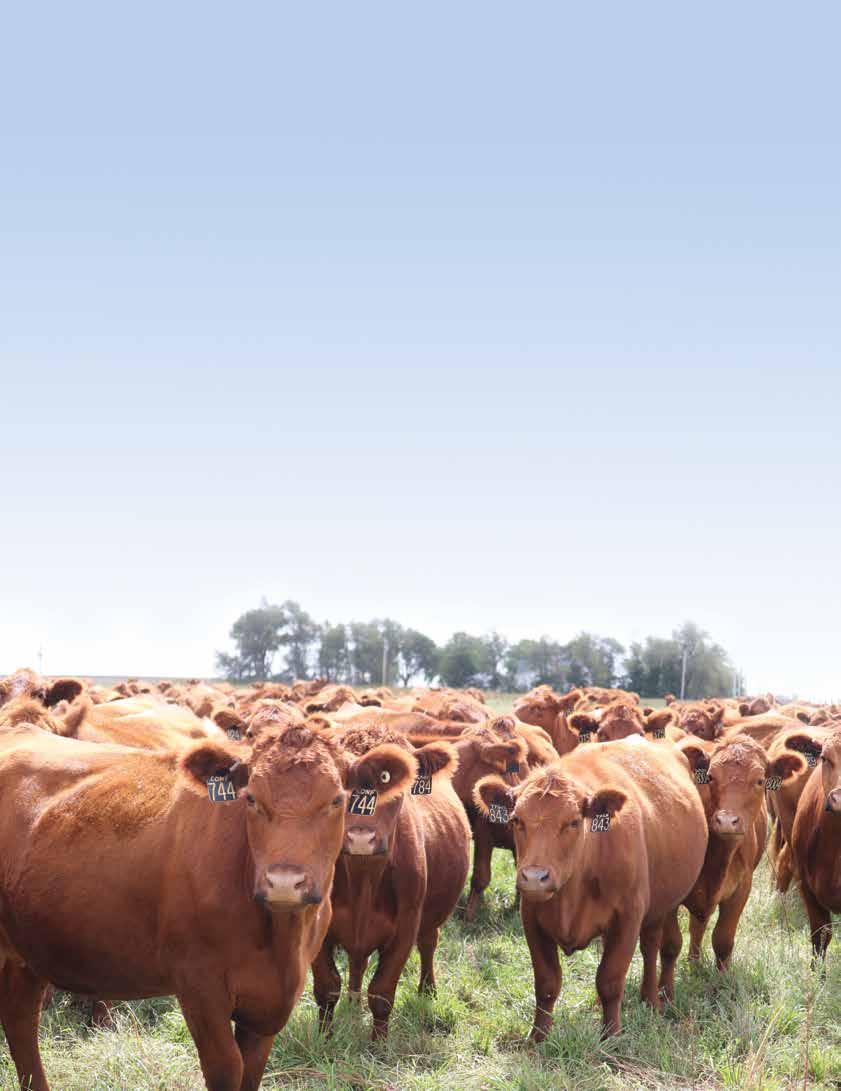 by Teres Lambert for the Red Angus Genetic Advancement Edition
by Teres Lambert for the Red Angus Genetic Advancement Edition
Artificial insemination isn’t just for purebred breeders. AI is also for commercial cattle producers seeking to increase weaning weights, improve post-weaning performance, boost carcass value and have more productive replacement heifers. If one or more of these objectives match your goals, then you might be wondering if AI can pay for itself in a commercial operation.
John B. Hall, Ph.D., Extension beef specialist, University of Idaho, would be on the “that just might be possible” side of the fence.


“AI can be economically beneficial to commercial beef operations if value can be captured in one or more areas,” Hall stated during a presentation at the Range Beef Cow Symposium XXVI.
The greatest opportunity for most cow-calf operations to capitalize on AI, Hall commented, is increasing the
Estrous synchronization jump starts non-cycling females and tightens up the calving window.
value of the feeder calf. But to capture this added value, he points out that AI must be partnered with an estrous synchronization program.
Research from the universities of Missouri, Florida and others, shows that fixed-time AI – which jump starts non-cycling cows – will result in a greater percentage of calves born in the first 21 to 30 days of the calving season. Frontloading the calving season helps raise weaning weights because the average age of calves rises.
You also reap the benefits of a more uniform calf crop at marketing to boost your bottom line.
When researchers at the University of Florida compared two years of a 120day natural service breeding season to a 70-day breeding season including fixed-time AI in their 300-cow herd, they increased returns to the herd by more than $40,000 per year.
Realistically, if you have 100 cows and want 50% to calve the first 10 days of the calving season, natural-service bulls cannot accomplish that. This is not the bulls’ fault. It’s the simple fact that a sufficient number of cows are not going to cycle and breed on their own in order for you to get 50% of the calves in 10 days. An estrous synchronization program must be in place to get that done.
By incorporating an AI program, you can select the genetics you want for certain traits: calving ease, growth,
C.J. Blew John Hall, Ph.D.

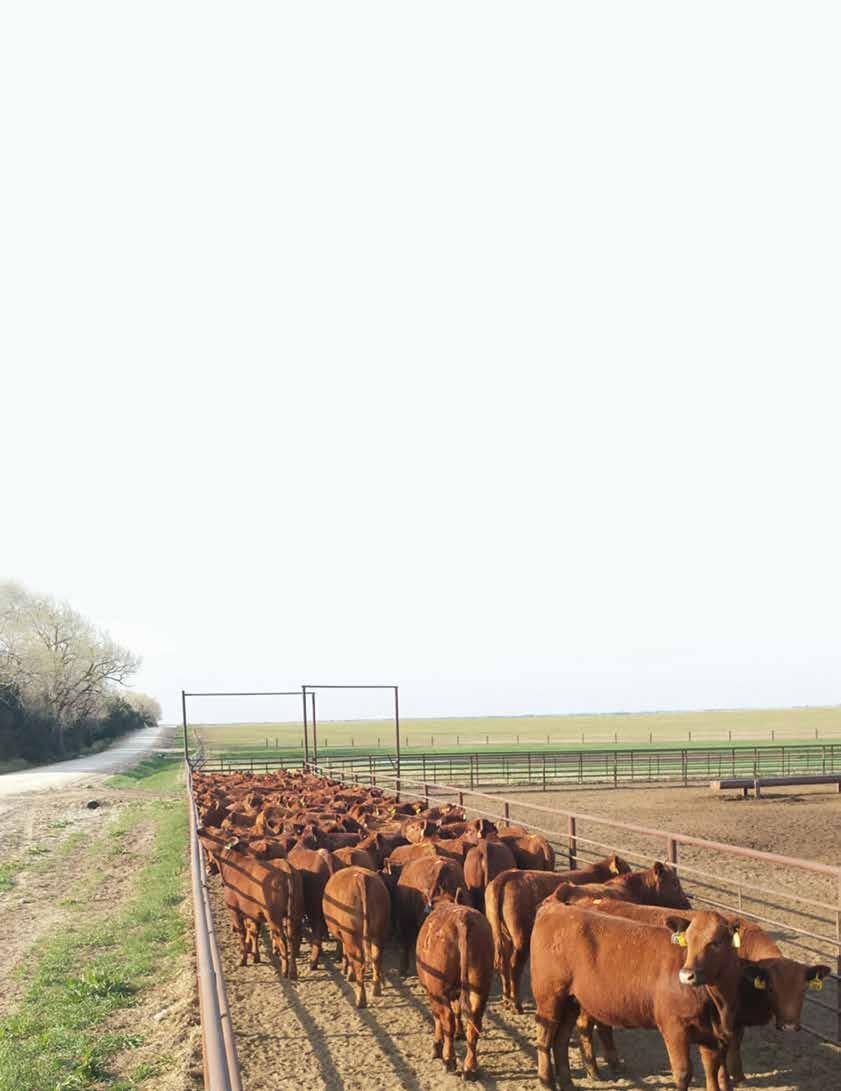
carcass traits, maternal traits, etc. For example, if your goal is keeping replacement heifers, you can AI your heifers to calving-ease bulls with high growth and strong maternal traits.
Improving longevity and genetic merit of replacement females are on Hall’s short list of ways to capture value that can help pay for an AI program. Research shows that heifers that calve earlier in their first calving season will, on average, rebreed earlier. They stay in the herd longer and produce more pounds of calf during their lifetimes than heifers that delivered their first calves later in the season.
“Estrous synchronization and AI can assist in getting a high percentage of heifers to calve in the first 21 days,” Hall noted.
The best way to realize return on the AI investment, Hall maintained, is “taking calves all the way to harvest,” and added that “carcass traits are among the most heritable” and high-quality carcasses – upper two-
thirds of Choice and Prime – can command a premium. In one case study of a 600-head cow herd, calves having both AI sire and dam increased return to cow by 22% and increased the percent of carcasses grading Choice by 38%, compared to calves that were a product of a natural service sire and dam.
For an AI program in a commercial operation to be successful, Extension beef specialists agree that management of nutrition and health must already be good. This increases the probability of acceptable pregnancy rates to AI is high. Estrous synchronization protocols must also be followed carefully.
Confident that his ducks were in a row concerning nutrition and health, C.J. Blew, Blew Partnership, Castleton, Kansas, is among the commercial cattlemen who have turned to AI. Blew Partnership started its AI program more than 13 years ago by AIing only heifers. A year later their AI program was expanded to include 2-year-old cows. Within a couple of years, Blew Partnership went all the way – AIing heifers and all cows.
Blew cited two factors for the switch to going totally AI, which they do for one round: timed AI and Gene, their AI professional.
“A lot of people avoid AI because of labor. But the labor part of AI isn’t as bad as you think,” Blew said. “Timed AI protocols opened the door for us from the labor perspective.
“And Gene, our AI guy, is very good at what he does because AI is what he does for a living. He came highly recommended to us and hiring him to AI for us was one of our smarter moves.”
Blew added that, in addition to AI cutting their bull battery in half, AI upped their herd’s maternal traits – giving them better replacement heifers and increased end-product merit. AI also allows them to introduce new genetics of superior quality into the herd every year without purchasing new bulls.
“Having access to superior genetics is worth the time involved with AIing,” he said.
While fewer bulls for cleanup are needed when AI is used – and this would result in a cost savings – Hall

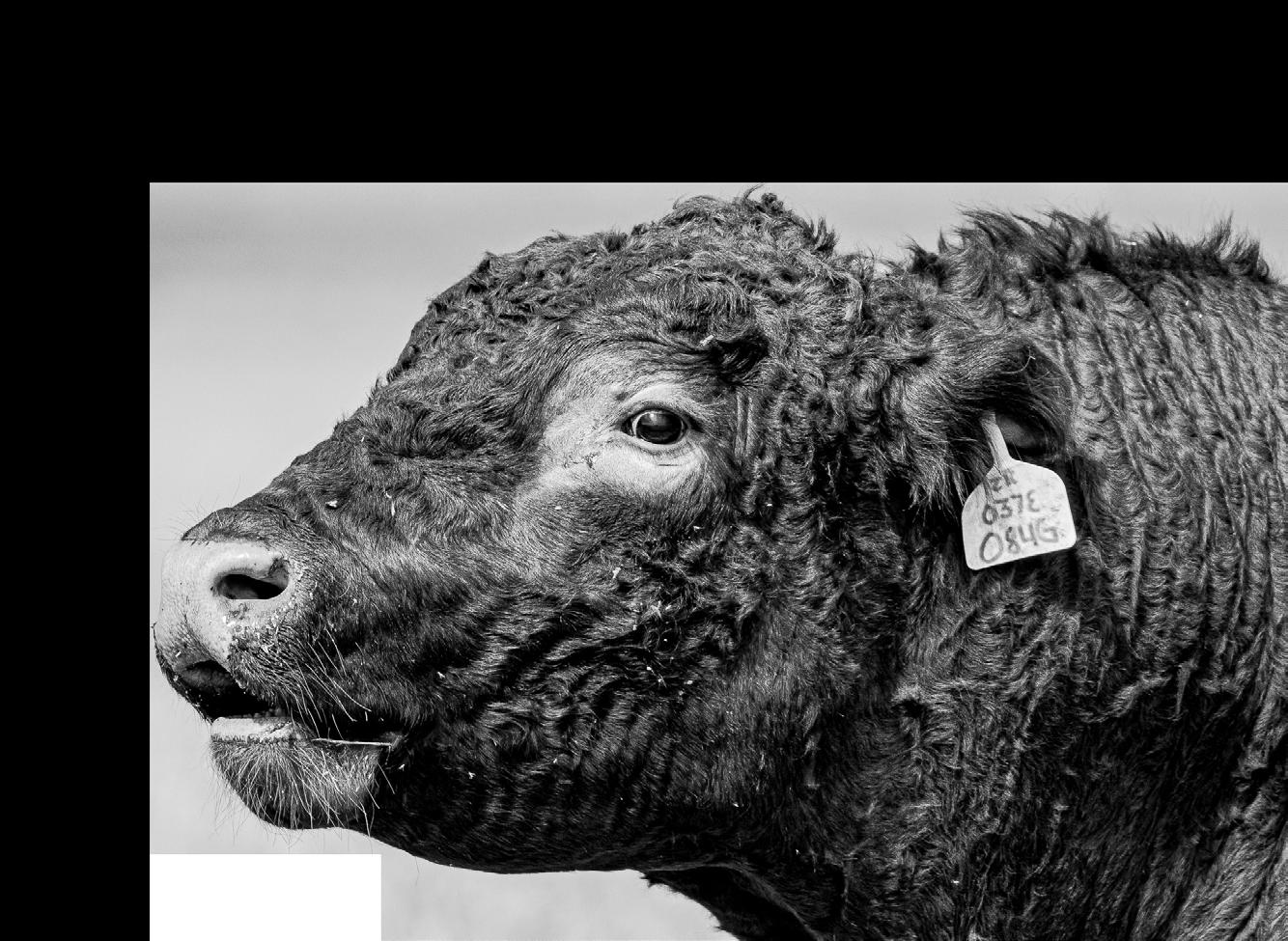








contended that this argument is “highly dependent on the cost of the bull, AI success rate and cost of AI.”
(Table 1)
Hall estimated that incorporating fixed-time AI into a 300-cow herd would cost $14,268, including the extra labor of working cattle. (Table 2) The cost of an AI pregnancy could vary from $95.12 for 50% pregnancy rate to $73.71 for a 65% pregnancy rate.
(Table 3)
When Hall compared the cost of an AI pregnancy to a natural service pregnancy, he drew the following conclusion: The cost of an AI pregnancy is about the same as a natural service pregnancy from a $4,000 to $5,500 bull. (Table 1 vs. Table 3)
To fairly compare the cost of a total natural service program to a combination of fixed-time AI plus clean up bulls, Hall developed a table that includes the cost of clean-up bulls in the calculation for total breeding costs. (Table 4)
Help is Available
Several tools are available online at Beef Reproduction Task Force’s web site – beefrepro.org/resources/ – to help you make decisions and guide you through the process of adopting reproductive technologies such as AI and a synchronization program.
The AI Cowculator helps answer the question “Is AI the way to go?” This particular tool uses actual producer inputs and predicted cattle values to determine the economic feasibility of AIing your cattle and delivers this info with the click of a button. The AI Cowculator also helps you locate nearby estrous synchronization product suppliers, gives you direct access to social media outlets where conversations regarding estrous synchronizations are conducted and provides access to a YouTube feed where helpful tips for estrous synchronization are posted.
Another free tool is the Estrus Syn-
*based on bull-to-cow ratio of 1:25 and a pregnancy rate of 90%
*based on four people at $8/hour for 8 hours for three working days.
chronization Planner developed to help herd managers make educated management decisions regarding estrous synchronization programs. This planning tool – a Microsoft Excel-compatible spreadsheet – can be used to compare input costs of several synchronization systems as well as assist you with planning and implementing some of the more complicated synchronization systems. The tool can also help you optimize labor use and eliminate errors in the timing of injections, starting and ending the feeding of MGA, CIDR insertions, etc.
The Estrous Synchronization Planner is the result of a partnership involving
the Beef Reproduction Task Force, Beef Reproduction Leadership Team and the Iowa Beef Center.
The Beef Reproduction Task Force’s website also contains additional resources and documents developed to increase the success of an AI program and estrous synchronization program.
Bottom line: If you decide to implement an AI program, estrous synchronization program, or both, help is available. The experts want you to succeed and be able to echo Blew, who said, “I wish we would have done AI years ago. If we had, we would be years ahead of where we are today.” //

The Rally research collaboration between RAAA and Neogen is designed to increase phenotypic data collection and submission for mature weights, body condition scores and genotypes on Red Angus females. Female genotype and phenotype information helps to improve genetic predictions and overall data on your Red Angus herd.


This is a really great opportunity to receive genotyping at a reduced rate.
REQUIREMENTS:
• Registered females only
• Must test 90% of females on active inventory

- Already genotyped females can count toward this 90%
• There is also no cap on herd size, as long as the 90% requirement is met, so this program is tailored to small and large producers



• Samples submitted for the Rally need to be TSUs (tissue)
BY PARTICIPATING IN THE RALLY YOU WILL RECEIVE:
• GGP100K (GGP-LD) testing for $22 (regularly $50)
- OS and MA testing can be added for $2/test; other defect testing is normal pricing
• $5 Age Rebate
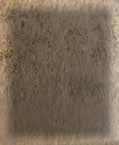
- At completion of testing, you will receive a one-time reimbursement of $5 for females submitted that are 6+ years old (circa 2016)
• $5 Phenotype Rebate
- Submit both Mature Cow Weights (MCW) and Body Condition Scores (BCS) for a one-time reimbursement



- Must be on every cow that weans a calf that season
- Must be within a week of calf weaning date
- You don’t have to apply for the rebates if you don’t want to; these are just additional ways to save money!

• Trophy outperformed on test and was the $20,000 sale topper at Treasure Bull Test



• His sire, McPhee Trophy, continues to be the breed’s power sire
• His dam is an elite Sun River female and his grandam is the legendary Royce’s Sensational 14
• No wonder his daughters take “fancy” to a whole new level!
• His sons are pure power with the look to match
• Proven on range cows – ’Nuff said!!!
Red Dawn is a tremendous meat wagon. He is everything you could order in the perfect bull. He is incredibly long with immense muscle and thickness. Red Dawn is smooth polled and wears a deep cherry red jacket. This guy is breathtaking.
Sam Lorenzen, Past Vice President, RAAA
“Whether you run 5 or 5,000 cows, crossbreeding can be highly effective. You can push the limits of heterosis by using a terminal cross on a straight-bred herd.”
USDA Meat Animal Research Center
“Planned crossbreeding results in a 23.3% increase in pounds of calf weaned per cow.”
• Tremendous growth!!!!!
• Will add another 10% of performance on British cows
• His F1 progeny are incredible with added length and thickness
• NOTE: Disadvantage to consider. With the current cost of trucking, you will have to order more trucks to haul your calves that weight 50-100 pounds more at shipping. There goes your carbon footprint!
 STENBERG TROPHY 7423
Stenberg Trophy 2423, pictured at 5 months, is a full brother to 7423 and is currently on test at the Midland Bull Test. He will sell in April 2023.
STENBERG TROPHY 7423
Stenberg Trophy 2423, pictured at 5 months, is a full brother to 7423 and is currently on test at the Midland Bull Test. He will sell in April 2023.


For over a decade, Red Angus females have commanded more at auction than all other breeds, including Angus. According to Superior Livestock data, Red Angus heifers brought nearly $17/cwt more –that equates to a $92/head premium on a weaned replacement female.

To learn more about industry-leading stayability, visit RedAngus.org

• Produced the $36,000 Co-Top Sellling bull in our October 2022 sale going to Bieber Red Angus
• Produced the $12,000 Lead-off Bull in the March 2022 Wedel Bull Sale
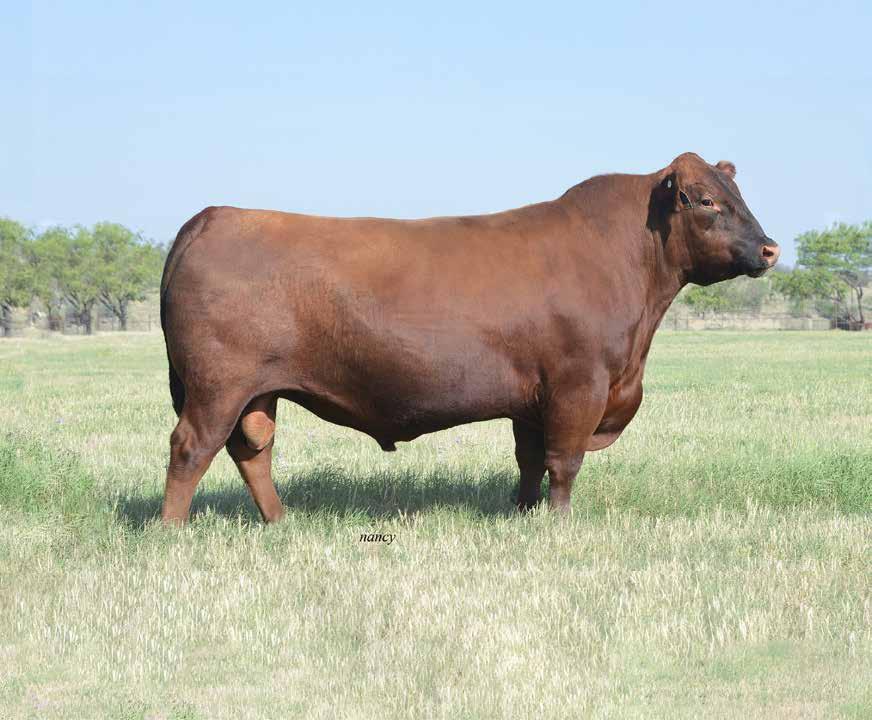
• RanchMaster displaced Oracle and Fantastic as our high semen sales bull in both 2021 & 2022
• One of the Breed’s elite High-Accuracy Calving Ease Sires with 80% Accuracy for BW EPD.
• Genetic predictions to improve udder suspension, teat size, docility, with best 1% PAP EPD
• Selling 100% Natural Service Rights and In-herd semen use at our sale on March 8, 2023
• His Sons also sell in our 8th Annual March Sale, March 8, 2023, Throckmorton, Texas
• Semen $24/straw - Save 10% at 50 straws, Save 20% at 100 straws, Call for Commercial Heifer Projects
Ranch
Commercial Bred Heifers
50 Registered Females (Red Angus)
Proper nutritional planning for raising productive heifers starts well before the animals are of breeding age. Producers need to consider what a heifer on their operation needs to succeed at every stage of life.

Regardless of the class of cattle you are feeding, the first step is to determine the goals of the feeding program. This includes knowing your on-farm labor, forage and ingredient-handling restrictions and opportunities, as well as the size and look of the animal you want to have at the end of the program. The nuances of feeding breeding stock take on greater dimension compared to feeder cattle because of the long-term considerations required of breeding stock. In a broad sense, the goal with replacement heifers is to give them the nutritional foundation for success that will hopefully allow them to produce eight to 10
big, healthy calves in their productive lifetime.
One of the most common questions posed in heifer development is if a high-input or low-input feeding program is the way to go. The answer, as in so many complex situations, is: “It depends.” The fact is: There isn’t any one right program that fits everyone. Every producer should do what fits their operation and their resources best. This could mean growing heifers in big grass pastures with some supplemental feed or, on the other end of the spectrum, it may include confining heifers in smaller pens and feeding a hay or silage-based TMR. My first (and best) piece of advice when developing heifers is the same advice when feeding any other class of cattle: Don’t let the check you write limit the size of the check you receive. In other words, don’t waste any money
Every producer should do what fits their operation and their resources best. This could mean growing heifers in big grass pastures with some supplemental feed or, on the other end of the spectrum, it may include confining heifers in smaller pens and feeding a hay or silage-based TMR.
on a feeding program by overfeeding or throwing every bell and whistle on the market at them. But we can do a good job of monitoring our input costs while making the most desirable product possible to buyers (or for our own heifer replacements).
The best place to start is always the beginning, and in this case, it may be much earlier than is typically considered in developing heifers. As our understanding deepens in so many areas, such as genomics and nutrition, it is important to know the indirect responses we can influence. When I say the beginning, I mean all the way back to conception. With our knowledge of generational nutrition (the effect nutrition can have on subsequent generations), we know that when cows have their nutritional needs met, they produce offspring that are more productive than offspring born

What’ll You’ll Find at 5L: Large Sire Groups of many of these and other Balanced Trait, High Profit 5L Herd Sires Superior Calving Ease Bulls that also predict Heavier Payweights and Conservative Mature Cow Size More Bulls capable of earning PRIME Premiums - backed by the breed’s largest carcass testing program Elite Fertility EPDs, which predicts more calves produced over these bulls’ daughters’ lifetimes Elite $Ranch to improve stocking rates and produce more pounds of Calf per Acre Semen Available on many of these Sires, contact 5L for details.

from nutritionally restricted cows. In essence, our heifer development program really starts with how we feed the cow producing the heifers we are developing.
What is the end goal?
Different development programs need to be aligned with the desired end goal: Are the heifers being developed for retention in your own herd or for sale to others? If you are developing your own heifers, you probably won’t want to have them on a super-aggressive plane of nutrition, maybe gaining 1.5 to 2 pounds per head per day. However, if you are developing heifers for sale, in most instances bigger, stouter, more mature-appearing heifers will sell better than the younger, greener ones. The most important thing is that the heifers are healthy and cycling when it’s time to breed them.
Especially when developing heifers for sale, it is important to know what kind of animal you are working with. If you have higher genetic or phenotypic merit-type heifers that have more potential value, it may be worth a bit more inputs to make sure these heifers look the part come sale time. If you are a fan of house-flipping reality TV shows, you see this same concept when you have a property with higher sale potential. When dealing with a valuable property, you include the extra investments to ensure you get all the value you can out of the property.
Take a longer view
When it comes down to nutrient details of a heifer development program, here are a few guidelines: Under no circumstances should the heifers be shorted on protein. Due to the longterm developmental expectations, vitamin and mineral inputs on heifers fit into this category as well. Energy is the place where we can potentially pinch pennies by strategically targeting the needed average daily gain. Protein is essential because of its role in muscle maintenance and development and proper rumen function. These are critical to the animal’s short-term and
long-term functionality; therefore, if we don’t meet these needs, we will see compromised results. Vitamin and mineral nutrition is critical for skeletal and tissue health, as well as immune function, and it is essential for getting a heifer pregnant, maintaining that pregnancy, and proper recuperation and lactation following birth.
ered wasted input. With the genetic advancements we have seen in just the past decade, the kind of cattle we are producing now have more muscle and potential for growth than cattle we raised in the past. For this reason, it is imperative to make sure we have our nutrition programs in tune with the animals we are developing today.
Energy level allows us more flexibility because it will largely determine the rate of growth and body condition. In low-input situations, I would recommend a targeted ADG of 1.5 to 2 pounds per head. In higher-input settings it might be worth targeting an ADG up to 2.5 pounds per head. The upper limit on feeding energy is to make sure the heifers are not overly conditioned to the extent where buyers are turned off or their ability to breed is impaired. For heifers being retained in the herd, gaining weight beyond what will allow them to breed up at the desired time can be consid-
In summary, make sure your heifer development programs are designed to meet the output goals you have set, and be conscious that the superior cattle we are producing have more potential than those produced in previous generations. There is an adage in cattle feeding, “It costs the same to feed a bad one as a good one,” meaning you might as well feed a good one. If we can tailor our nutrition programs to the advanced genetics we have access to, we might be able to turn that old adage on its ear.
Superior genetics that are provided superior nutrition might be far more efficient than outdated, inferior cattle. A well-designed nutritional investment during development should pay dividends for years to come in heifers that become cows that calve, re-breed and wean big, healthy calves. //

“Don’t let the check you write limit the size of the check you receive.”

Use Red Choice to improve heifer development, increase marketing opportunities or Red Angus females and create reliable sources of high-quality replacement heifers for cattle producers.
Red Choice Requirements


• Heifers Enrolled in a Red Angus Value-Added Program


• Vaccination Protocol
• Pelvic Measurement/Tract Score
• Phenotypic Assessment
• Planned Mating to Eligible Sires
• Pregnancy Exam
Producers can put premium Red Choice females to work in their herd with the confidence these females have been managed and raised to the highest quality standards possible.
To learn more about Red Choice and how to enroll heifers,visit RedAngus.org.

Any cow-calf producer will attest that the cow is the bedrock of the business. It’s right there in the word: cow herd. Individual cows may have a limited impact on the profitability of a herd, however collectively, when the cow herd is more productive, producers are more profitable.

In a time where margins are tight and input costs are constantly rising, it’s important for every female to contribute positively to the herd. Females that don’t breed back or require extra management due to dystocia or other health challenges are ultimately wasting resources that could be utilized by other more efficient and productive females. Heifers play a significant role in the profitability of an operation and much hangs on their ability to get pregnant, wean a calf and breed back quickly in order to stay in the herd.
Jordan Thomas, Ph.D., assistant professor and state cow-calf specialist in the Division of Animal Sciences at the University of Missouri, attests that successful heifer development and retention isn’t just “luck of the draw.”
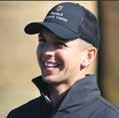
“If we can get heifers to stay in the herd and be great cows, that’s not luck. It’s management and genetics. The cost associated with cows falling out of the herd and not breeding back is second only to feed costs,” said Thomas. “We reap what we sow as managers, and profitability isn’t random,” he added.

keting opportunities for Red Angus females and create reliable sources of high-quality replacement heifers for cattle producers.
Red Choice embraces proven reproductive and genetic management practices which, in turn, lead to high-quality, long-lasting females that are ready to hit the ground running in commercial herds. Much of the rationale for Red Choice is based upon the success of heifer development programs like the Show-Me-Select Replacement Heifer Program from the University of Missouri.
Nolan Woodruff, RAAA commercial marketing specialist, explained the necessity for Red Choice.
Recognizing the importance of profitability to the sustainability of a cow herd, and to continue providing support and marketing avenues to commercial cattle producers, RAAA developed and launched the Red Choice program to promote improved heifer development, increase mar-
“Red Choice sets a standard for breeding, using advanced technology, sire selection and documentation of individual breeding. It was created to allow those producing females to be more profitable and for those who are buying Red Choice heifers to be confident that those females have been managed properly and have a higher
“We reap what we sow as managers, and profitability isn’t random.”
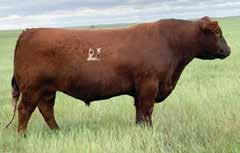





#4318895
DK Rolling H316 #4318791
DK Thunder H602 4318831 VGW Endurance 032 #4272761 Red


Escobar 100H #4576677

Resource 1441 #17016597










Tahoe B767 #17817177 Janssen Dow Jones 0005 #19810625

Random retention rate, thus making the buyer more profitable,” he said.
“The University of Missouri has proven that females that are raised using these management practices and bred using the required criteria are more valuable producers,” added Woodruff.
To be included in the program and eligible for the Red Choice designation, heifers must meet the following minimum requirements:
• Vaccinations at calfhood, weaning and prebreeding for common diseases including, but not limited to; Bangs, IBR, BVD, PI 3, BRSV, leptospirosis (5-way) and 7-way clostridia
• Prebreeding examination and a minimum pelvic area of 150 cm2
• AI and bull exposure dates must be provided, as well as method of estrous synchronization (if applicable)
• Pregnancy exam within 90 days of the start of breeding season
Additionally, as one of the program’s main pillars is to significantly reduce dystocia problems, genetic requirements are implemented as well. Eligible sires must have a known ID, be registered with the RAAA, be Category 1A, 1B or II and have complete EPD information. All sires, AI or natural service, must be a minimum of 14 for CED and have GE-EPDS.
Noticeably, the vaccination schedule
and numerous exams lend themselves to multiple appointments with producers’ veterinarians, which in turn should improve the veterinarian-client-patient relationship.
While the increased touchpoints may seem burdensome at first, there is little argument against the positive impacts the Red Choice management process has on the value of program heifers, both to the profitability and

Timeline and Data Collection
Procedures
o Vaccinations: IBR, BVD, PI3, BRSV, 7-way clostridial, and brucellosis
o Evaluate structural soundness and blemishes (scarred eyes, rat-tails, injuries)
o Parasite control as needed
30-60 days prior to breeding
Procedures
o Vaccinations: IBR, BVD, vibriosis, 5-way leptospirosis
o Reproductive tract score
o Pelvic measurement
o Evaluate structural soundness and blemishes
o Parasite control as needed
o Confirm eligibility of planned service sires
o AI sire EPDs and accuracies must meet requirements
o Natural service sires must have GE-EPDs and meet calving ease EPD requirement
Required Data
o Individual ID
o OCV (brucellosis) tag number
o Reproductive tract score
o Pelvic measurements
o Breed or breed cross
o Coat color
o Blemishes/unsoundness
Optional Data (if available)
o Registration number
o Genomic test
All products listed must be used according to label directions. Consult your veterinarian regarding any questions on health procedures. Forms for data collection will be provided from a Red Choice coordinator. All data should be forwarded immediately after collection to Erin Larimore – LarimoreE@missouri.edu.
o Body condition score
o Hair shedding score
o Docility
o Sire registration number
o Birth date
o Weight
o Hip height
o Notes/concerns
o Foot score
Required Data
o Breeding program
o Artificial insemination (AI)
o Breeding date(s)
o Service sire registration numbers
o Natural service
o Bull exposure dates
o Estrous synch protocol
o 1 Shot PG
o CIDR + PG
o MGA + PG
o Select Synch + CIDR
o 7-d CO-Synch + CIDR
o 5-d CO-Synch + CIDR
o 14-day CIDR + PG
o Breeding management
o Heat detection
o Heat detection and clean-up AI
o Fixed-time AI
o Split-time AI
o Individual animal records
o Heat expression (if known)
o Breeding date (mo/day)
o Breeding time (am/pm)
o Technician information
o Initials
o Lay versus professional
Maximum of 90 days after start of breeding
Procedures
o Booster vaccination: 5-way leptospirosis
o Pregnancy exam
o Body condition score
o Re-measure pelvis on heifers less than 150 cm2 at pre-breeding
o Evaluate for structural soundness and blemishes
o Parasite control as needed
Required Data
o Individual ID
o OCV (brucellosis) tag number
o Number of days pregnant
o Pelvic measurements (if re-measured)
o Blemishes/unsoundness
Optional Data (if available)
o Fetal sex
o Body condition score
o Genomic test information
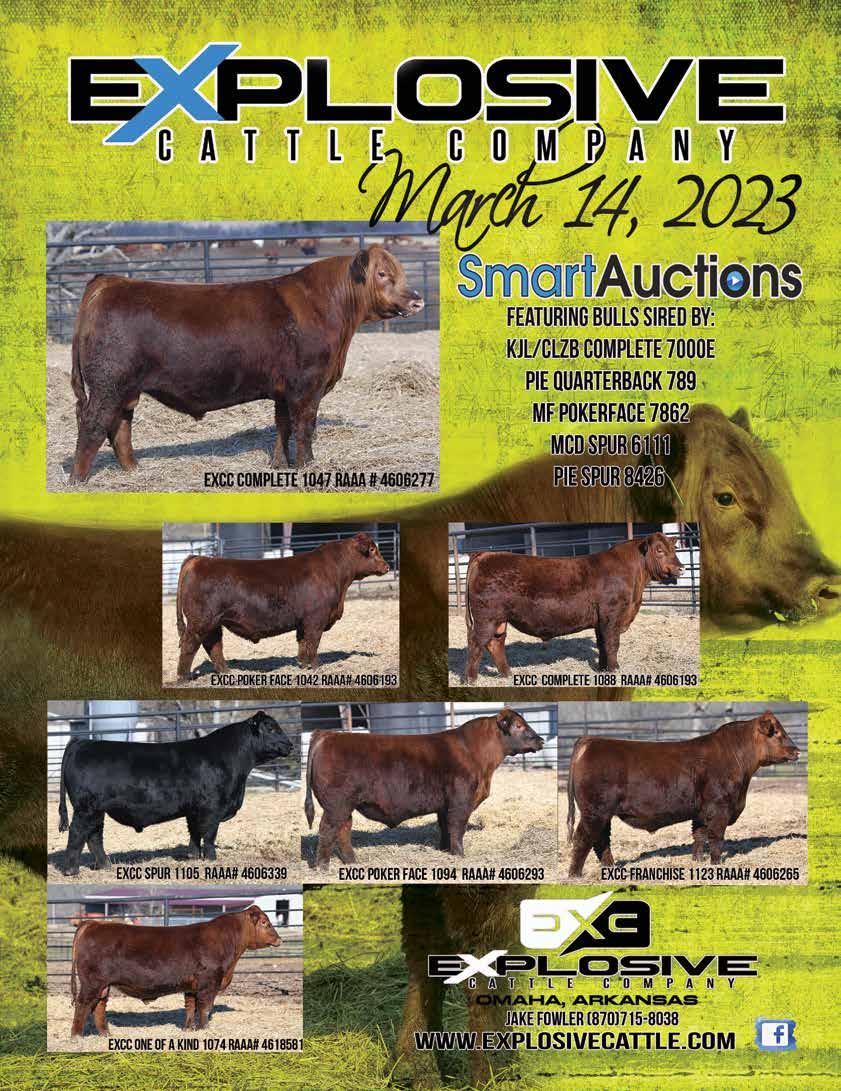
“Our brain tends to think of the word ‘technology’ as estrous synchronization products, long acting dewormers or the newest feed additive. However, those tools are just one kind of technology. Technology is really just knowledge applied. Management systems themselves are also a form of technology,” said Thomas.
“Data collection, prebreeding evaluations, pregnancy diagnosis – those technologies of good management practices – they create the context that allows us to really capture value produced from using other tools.”
Looking for a tangible benefit to the increased management protocols?
Thomas attested the extra touchpoints are well worth the added investment in both materials and time.
Me-Select routinely bring a couple hundred more per head compared to other heifers that are comparable in age, size, etc. at a sale barn,” he said.
Thomas likens it to feeder calves that are profitable for being weaned, vaccinated and bunk broke. There is tremendous value to be gained by capturing and sharing information.
“Buyers appreciate quality but also really appreciate information. These are high information and high-quality heifers and buyers are willing to pay for it.”
Woodruff shared his excitement about the program and the potential it has to aid commercial producers with their herd improvement goals.
“The need for Red Choice is simple: documented long-term fertility. When you
“By utilizing the Red Choice management practices in the development and breeding of heifers, both buyers and sellers can be extremely confident in the reproduction efficiency of heifers enrolled in the Red Choice program,” said Woodruff.

“This efficiency results in cows staying productive in the herd longer and in turn being more productive and profitable for producers.”
Woodruff encouraged producers who are wary about starting out in the program to contact members of the Red Angus commercial marketing team.
“We are here to answer any questions about the program. This program is available for use by anyone who is breeding heifers to help make them even more valuable than they already

100 Head of Charolais, Red Angus, & Red SimAngus Yearling Bulls
20 Head of Registered Charolais, Red Angus, & Red Simangus Yearling Heifers


10 Head of Commercial Red Angus Bred Heifers




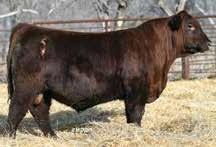
26 ET
JBARW WAR WAGON 2509
JBARW MR CINCH 2510
Auctioneers: Brad Veurink & Dan Clark

To enroll contact Chessie Mitchell at RAAA, chessie@redangus.org. Enrollment deadlines are February 1st for spring breeding season and September 1st for the fall breeding season.
Heifers enrolled in the program, if home raised, must be enrolled in the Feeder Calf Certification Program, Allied Access Program, Premium Red Baldy, American Red or be registered through the RAAA. If purchased, heifers must be owned a minimum of 60 days prior to breeding and have been enrolled in the FCCP, PRB or AR programs prior to purchase at the ranch of origin. For cattle enrolled in PRB or AR, all sires must be eligible Red Angus sires.
Follow label directions for all products used. A comprehensive herd health vaccination program starting at weaning age or before should be administered under the advice and guidance of a veterinarian in the context of a valid veterinary-client-patient relationship. The following vaccination program is required at a minimum:

Vaccination against IBR, BVD, PI 3, BRSV, leptospirosis (5way), vibriosis (optional) and 7-way clostridia. Heifers must be 5 months of age or older at time of vaccinations, and receive booster vaccination according to label directions.
Between 30 and 60 days prior to breeding, booster vaccinations must be given against IBR, BVD, leptospirosis (5-way) and vibriosis. Modified live vaccines for IBR and BVD are recommended. If killed viral vaccine products are used, two boosters are strongly recommended.
A booster vaccination against leptospirosis (5-way) is required at pregnancy examination.
Official calfhood vaccination (OCV) tag number will be recorded as a secondary ID. Note that brucellosis vaccination must be given by an accredited veterinarian in accordance with state and federal regulations (i.e. prior to heifers reaching over 12 months of age).
A prebreeding reproductive evaluation is required for all heifers and must be performed 30 to 60 days prior to breeding. Individual animal identification, pelvic measurement and reproductive tract score is required at this time. Heifers must have a minimum pelvic area of 150 cm2. Heifers with a pelvic area smaller than 150 cm2 may be re-measured at the initial pregnancy exam, performed within 90 days from the start of the breeding season. At that time, heifers that are re-measured must have a minimum pelvic area of 180 cm2 to qualify.
Breeding
Producers using artificial insemination must report breeding dates as well as method of estrous synchronization (if applicable). Natural service bull exposure dates are also reported. To ensure accuracy when distinguishing between AI versus natural service pregnancies, heifers that are bred artificially may not be exposed for natural service for a minimum of 14 days.
Pregnancy Examination
An initial pregnancy examination must be performed within 90 days from the start of the breeding season. Individual animal identification, pregnancy status and fetal age (in days) are required. Reporting of fetal sex is optional. Any heifer that fails to become pregnant, or loses a pregnancy following the original breeding season, is no longer eligible for the program.
Genetic Requirements
Sire Requirements
Eligible sires must have a known ID, be registered with the RAAA, be Category IA, 1B or II and have complete EPD information. All sires, AI or natural service, must be a minimum of 14 for the CED and have GE-EPDs.
Red Choice-Plus Classification
Heifers tested with a heifer genomic prediction panel approved by Red Choice coordinators will be given the designation of Red Choice-Plus Heifer. These include GE-EPD or Red Navigator. DNA samples must be submitted to the RAAA.

Fee Structure
Watch for upcoming details or contact RAAA marketing staff for more information.
For females with Red Navigator results (Red Choice Plus) or registered females with GE-EPDs (Red Choice Plus), the enrollment fee is waived. //



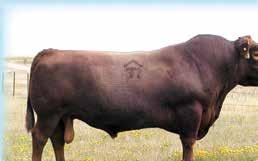








1. The producer contacts the Red Angus Association of America at 940-477-4593 and answers a short supplier enrollment questionnaire over the phone. RAAA staff will ask general management, animal identification and breeding questions. If needed, the producer may be asked to supply additional documentation on breeding such as semen receipt, lease agreements or information on purchased females.
2. After all documentation is recorded, staff will ship the tags directly to the producer who must tag the calves before they leave the ranch of origin – birth, branding, preconditioning, weaning or before loading on the semi.
3. The producer will receive a customer enrollment agreement to fill out and return to RAAA with a copy of their calving records.
4. Staff will issue the USDAapproved Certificate of Compliance upon receiving the customer enrollment agreement and calving record.
FCCP Tags
99¢ each
Allied Access Tags
99¢ each
EID Combo Sets
$3 each
The Red Angus Feeder Calf Certification Program is the first step in differentiating your cattle to buyers, feedlots and packers. Experience industry-leading return on investment for just the cost of an ear tag – with no enrollment fees. The Red Angus Association of America Marketing Team offers assistance to Red Angus bull customers at no charge.

Visit RedAngus.org for contact information.
• FCCP (Yellow Tag)
• Allied Access (Green Tag)
• Premium Red Baldy (White Tag)
• American Red (Blue Tag)
• Tyson’s Choice+ Grid
• Greater Omaha’s G.O. Red Grid
• Stockyard
• Feedlot Partners
• Red Angus FeederFax
• Red Angus FeMail
• Calendar of Events











February
1 Shoco Ranch Private Treaty Sales, Augusta, MT
2 K2 Winter Bull & Female Sale, Wheatland, WY
3 TJS “Red Truck” Sale, Buffalo, WY
4 Loonan Stock Farm, Corning, IA
4 Ludvigson Stock Farms Big Sky Bull Sale, Shepherd, MT
7 Twedt Red Angus, McHenry, ND
8 York Creek Red Angus, Dunlap, IA
10 Lemke Cattle, Lawrence, NE
10 Raml Cattle, Goodwin, SD
10 TNT Simmental & Red Angus, Lehr, ND
14 Rhodes Red Angus Ranch, Faulkton, SD
15 Barenthsen-Bullinger Red Angus, Powers Lake, ND
15 Calvo Family Red Angus, Buffalo, WY
16 Olson’s Red Power Performance Bull & Female Sale, Argusville, ND
16 Wasem Red Angus, Richardton, ND
17 R Lazy B Ranch, Aberdeen, SD
18 Lazy J Bar Ranch, Aberdeen, SD
March
1 Final Ad Reservation/Editorial Deadline for April Red Angus Magazine

1 Dille Red Angus, Buhl, ID
1 Lost Creek Red Angus Private Treaty Opening Day, Molt, MT
1 Pederson’s Broken Heart Ranch, Firesteel, SD
1 Rocking R Red Angus Private Treaty Bull Sale, Montrose, CO
2 Bieber Fever Yearling Bull Sale, Leola, SD
3 Sutherlin Farms Red Angus, Stevensville, MT
4 DK Red Angus, Williston, ND
4 Grussing Red Angus, Platte, SD
4 Redland Red Angus, Hysham, MT
4 S Diamond Angus, Henderson, NE
6 Campbell Red Angus, McIntosh, SD
6 McCann Red Angus, Billings, MT
7 Trusted Performance Bull Sale, Alva, OK 7 Sandhill Red Angus, Sidney, MT
Berwald Red Angus, Toronto, SD
April
1 Final Ad Reservation/Editorial Deadline for May/June Red Angus Magazine
1 “The Andras Kind” Bull Sale, Manchester, IL
1 Six Mile Red Angus, Fir Mountain, SK, Canada
1 Spear J Red Angus, Jordan, MT
4 Reisdorfer Red Angus, Magnolia, MN
7 Zerr Red Angus, Oakley, KS
8 HanSine Ranch, Pierre, SD
8 Ludvigson Stock Farms Spring Herdbuilder Sale, Shepherd, MT
8 Sonstegard Cattle Co., Montevideo, MN
8 Weber Charolais & Red Angus Farm, Lake Andes, SD
10 Moose Creek Red Angus Yearling Bull Sale, Kisby, SK, Canada
18 Moose Creek Red Angus 2-Year-Old Bull Sale, Kisby, SK, Canada
18 Nordlund Stock Farm, Clearbrook, MN
18 Overmiller Red Angus & Gelbvieh, Smith Center, KS
19 Larson’s Lost River Ranch, Clearbrook, MN
19 Forster Red Angus Online Bull Sale
20 Frank Cattle Co., Chappell, NE
20 Graze Through the Snow Bull and Bred Heifer Sale, Athabasca, AB, Canada
22 Price-Murdock Bull & Female Sale, Stanfield, OR
24 Brenner Angus, Mandan, ND
25 Sutphin Cattle, Lamar, CO
25-26 Valnes Red Angus Ranch Private Treaty Open House, Eden, SD
26 Namken Red Angus, Lake Norden, SD
27 C-Bar Red Angus, Plainville, KS
27 Lone Tree Red Angus, Meadow, SD
27 Turtle River Cattle Co. Online Bull Sale, DVAuction.com
28 Deckert Sim-Red Angus, Steele, ND
14
15
a Bull Sale, Lafayette, TN
18 Red Reckoning, Douds, IA
Pieper Red Angus, Hay Springs, NE
31 Red Angus Photography Contest Deadline
11 Beckton Red Angus, Sheridan, WY
11 Thomas Ranch, Harrold, SD
13 Bowling Ranch Spring Bull Sale, Newkirk, OK
14
5L Red Angus, Sheridan, MT
17 Holton Cattle Co., Cisco, TX
21 Grill’s Red Western Sale, Crawford, NE
22 Missouri Red Angus Show-Me Reds Sale, Springfield, MO
22 Right on Red, Seneca Falls, NY
26 Gill Red Angus, Timber Lake, SD
28 Kuhn’s Red Angus & Huber EY Red Angus, Napoleon, ND
 DUFF HD 2046 - RAA. #4466181 DUFF RED WOOD1941 - RAA#4221872 Heifer Plus semen available!
RED DIAMOND EL REY 102 - RAA#4445797 Female sexed semen available!
DUFF RED BLOOD 18114 - RAA #4091208 Heifer Plus semen available!
EGL GCC RED EAGLE E7194 RAA. #3753947
DUFF HD 2046 - RAA. #4466181 DUFF RED WOOD1941 - RAA#4221872 Heifer Plus semen available!
RED DIAMOND EL REY 102 - RAA#4445797 Female sexed semen available!
DUFF RED BLOOD 18114 - RAA #4091208 Heifer Plus semen available!
EGL GCC RED EAGLE E7194 RAA. #3753947





